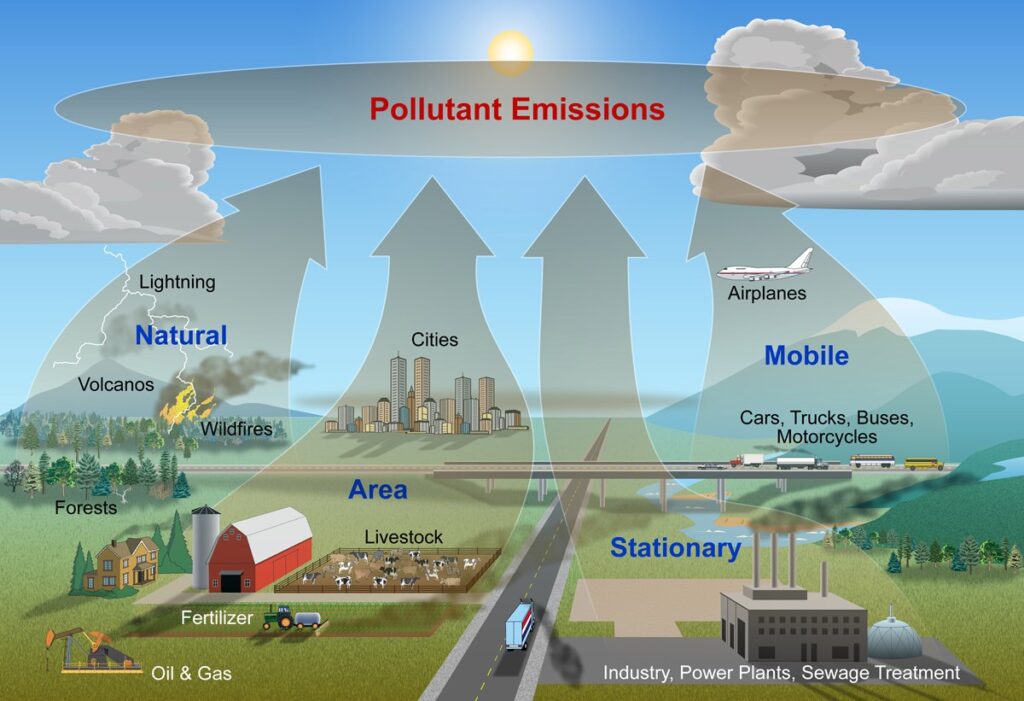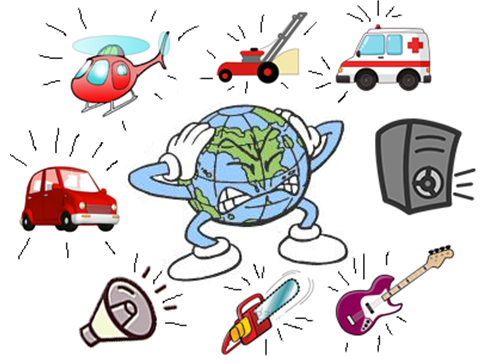
Health Effects
Air pollution can harm us when it accumulates in the air in high enough concentrations. Millions of Americans live in areas where urban smog, particle pollution, and toxic pollutants pose serious health concerns. People exposed to high enough levels of certain air pollutants may experience:
- Irritation of the eyes, nose, and throat
- Wheezing, coughing, chest tightness, and breathing difficulties
- Worsening of existing lung and heart problems, such as asthma
- Increased risk of heart attack
In addition, long-term exposure to air pollution can cause cancer and damage to the immune, neurological, reproductive, and respiratory systems. In extreme cases, it can even cause death.
Who Is Most at Risk?
Air pollution is a problem for all of us. However, some groups of people are especially sensitive to common air pollutants such as particulates and ground-level ozone. Sensitive populations include children, older adults, people who are active outdoors, and people with heart or lung diseases, such as asthma. If you are sensitive to air pollution, you need to be aware of steps you can take to protect your health.
For more information Click

Environmental Effects
Along with harming human health, air pollution can cause a variety of environmental effects:
Acid rain is precipitation containing harmful amounts of nitric and sulfuric acids. These acids are formed primarily by nitrogen oxides and sulfuric oxides released into the atmosphere when fossil fuels are burned. These acids fall to the earth either as wet precipitation (rain, snow, or fog) or dry precipitation (gas and particulates). Some are carried by the wind, sometimes hundreds of miles. In the environment, acid rain damages tree and causes soils and water bodies to acidify, making the water unsuitable for some fish and other wildlife. It also speeds the decay of buildings, statues, and sculptures that are part of our national heritage. Acid rain has damaged Massachusetts lakes, ponds, rivers, and soils, leading to damaged wildlife and forests. For more information on acid rain.
Eutrophication is a condition in a water body where high concentrations of nutrients (such as nitrogen) stimulate blooms of algae, which in turn can cause fish kills and loss of plant and animal diversity. Although eutrophication is a natural process in the aging of lakes and some estuaries, human activities can greatly accelerate eutrophication by increasing the rate at which nutrients enter aquatic ecosystems. Air emissions of nitrogen oxides from power plants, cars, trucks, and other sources contribute to the amount of nitrogen entering aquatic ecosystems.
Haze is caused when sunlight encounters tiny pollution particles in the air. Haze obscures the clarity, color, texture, and form of what we see. Some haze-causing pollutants (mostly fine particles) are directly emitted to the atmosphere by sources such as power plants, industrial facilities, trucks and automobiles, and construction activities. Others are formed when gases emitted to the air (such as sulfuric dioxide and nitrogen oxides) form particles as they are carried downwind. For more information on haze, visit the U.S. Environmental Protection Agency (EPA) Visibility Web page.
Effects on wildlife. Toxic pollutants in the air, or deposited on soils or surface waters, can impact wildlife in a number of ways. Like humans, animals can experience health problems if they are exposed to sufficient concentrations of air toxics over time. Studies show that air toxics are contributing to birth defects, reproductive failure, and disease in animals. Persistent toxic air pollutants (those that break down slowly in the environment) are of particular concern in aquatic ecosystems. These pollutants accumulate in sediments and may bio magnify in tissues of animals at the top of the food chain to concentrations many times higher than in the water or air.
Ozone depletion. Ozone is a gas that occurs both at ground-level and in the Earth’s upper atmosphere, known as the stratosphere. At ground level, ozone is a pollutant that can harm human health. In the stratosphere, however, ozone forms a layer that protects life on earth from the sun’s harmful ultraviolet (UV) rays. But this “good” ozone is gradually being destroyed by man-made chemicals referred to as ozone-depleting substances, including chlorofluorocarbons, hydrochlorofluorocarbons, and halons. These substances were formerly used and sometimes still are used in coolants, foaming agents, fire extinguishers, solvents, pesticides, and aerosol propellants. Thinning of the protective ozone layer can cause increased amounts of UV radiation to reach the Earth, which can lead to more cases of skin cancer, cataracts, and impaired immune systems. UV can also damage sensitive crops, such as soybeans, and reduce crop yields.
Crop and forest damage. Air pollution can damage crops and trees in a variety of ways. Ground-level ozone can lead to reductions in agricultural crop and commercial forest yields, reduced growth and survivability of tree seedlings, and increased plant susceptibility to disease, pests and other environmental stresses (such as harsh weather). As described above, crop and forest damage can also result from acid rain and from increased UV radiation caused by ozone depletion.
Global climate change. The Earth’s atmosphere contains a delicate balance of naturally occurring gases that trap some of the sun’s heat near the Earth’s surface. This “greenhouse effect” keeps the Earth’s temperature stable. Unfortunately, evidence is mounting that humans have disturbed this natural balance by producing large amounts of some of these greenhouse gases, including carbon dioxide and methane. As a result, the Earth’s atmosphere appears to be trapping more of the sun’s heat, causing the Earth’s average temperature to rise – a phenomenon known as global warming. Many scientists believe that global warming could have significant impacts on human health, agriculture, water resources, forests, wildlife, and coastal areas. For more information, visit EPA’s Global Warming Web page


